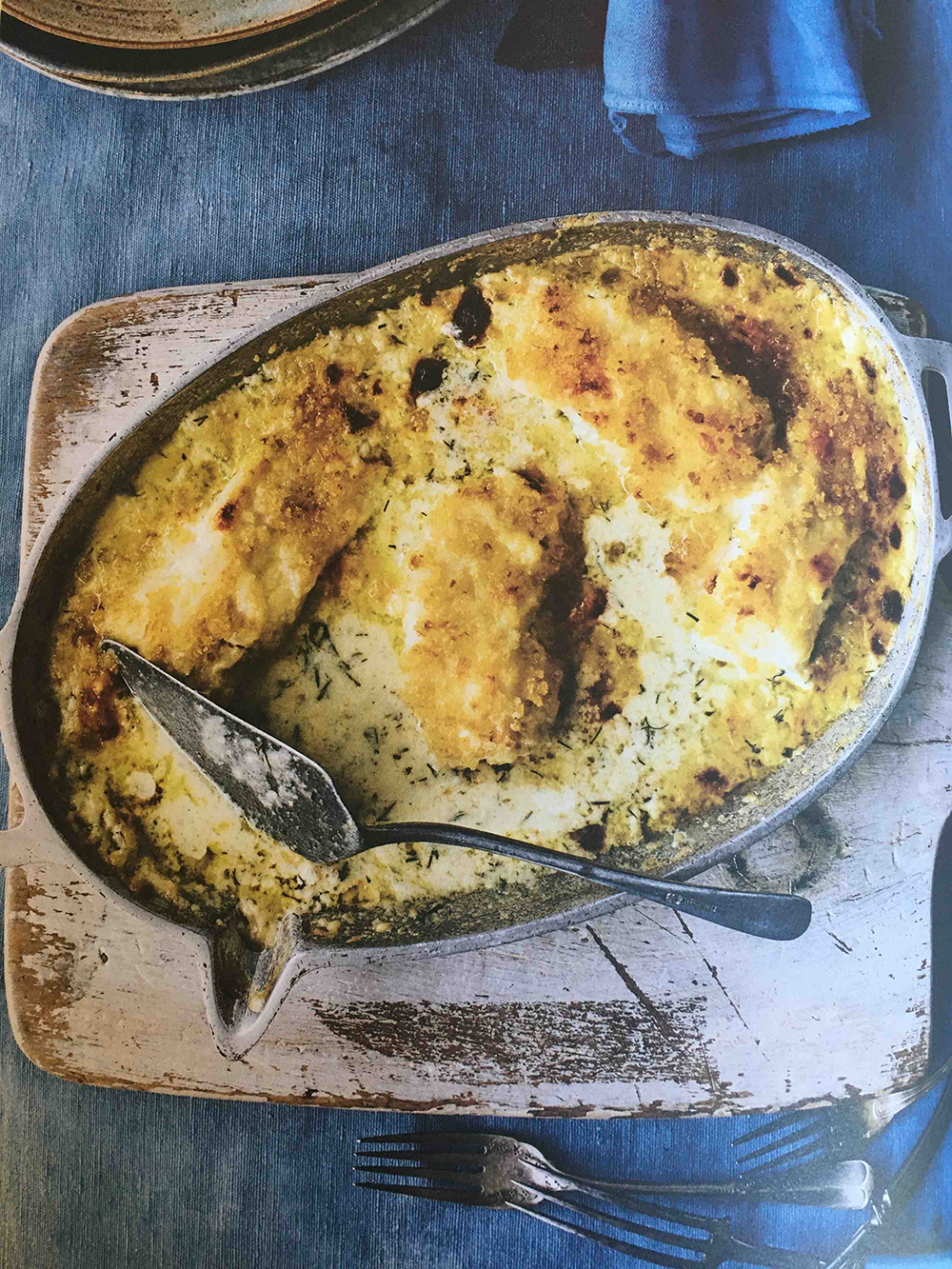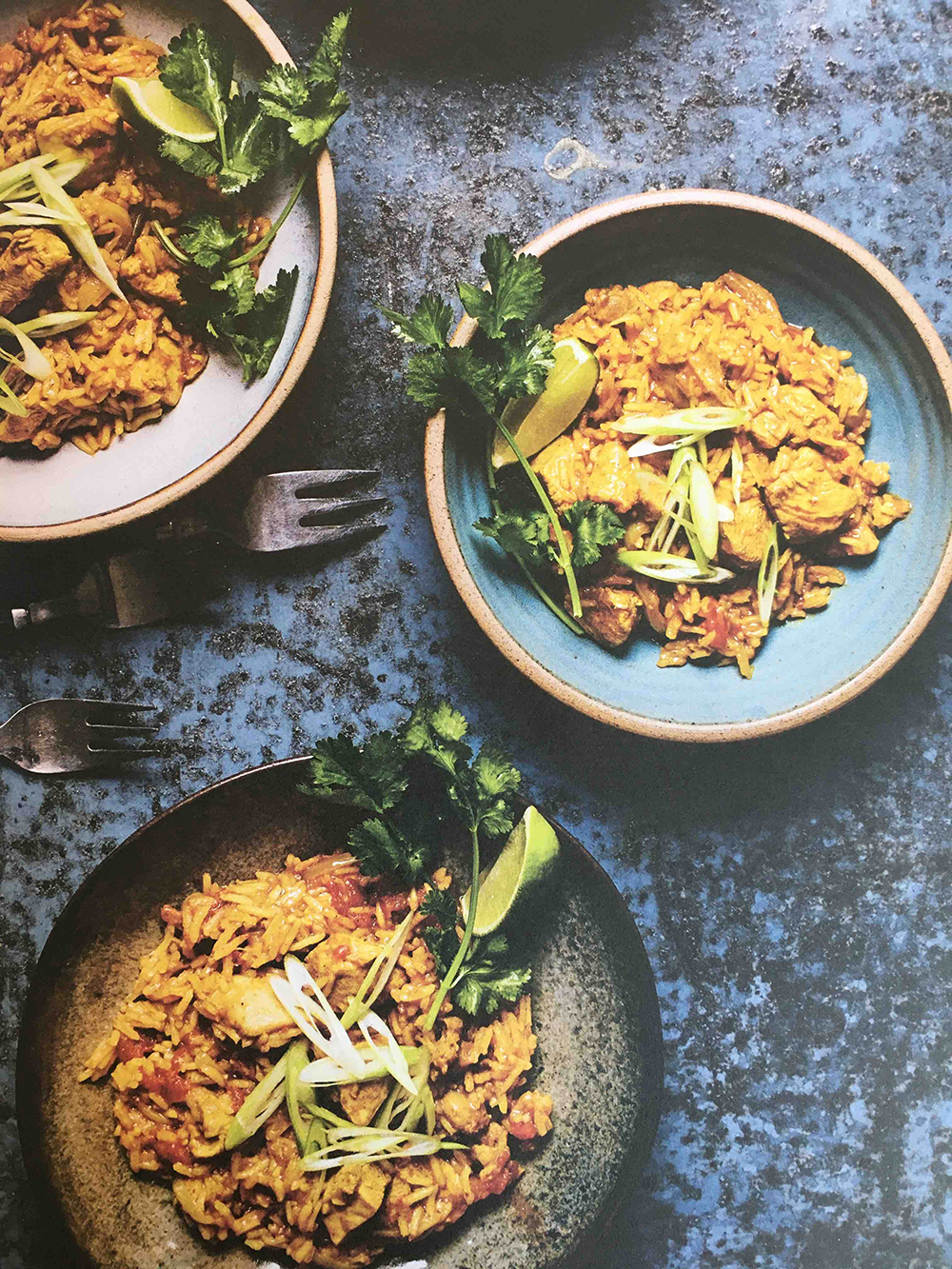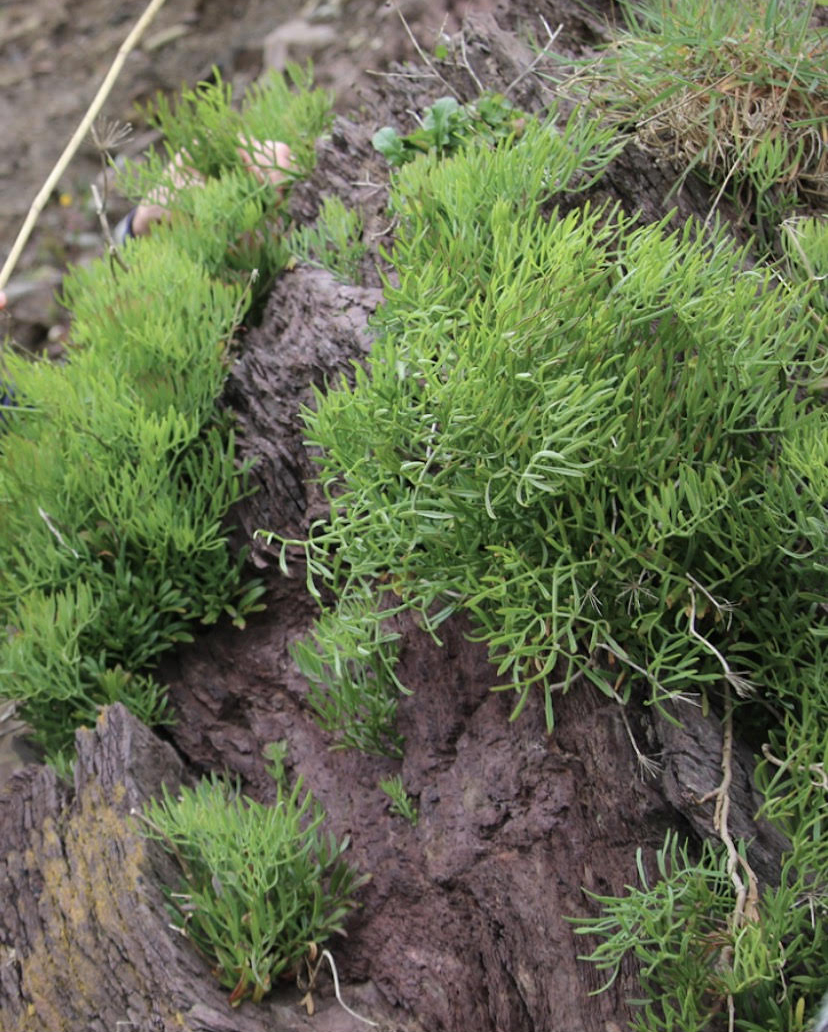The Darina Allen Column
Darina has been inundated with requests for advice and recipes during the coronavirus crisis - and she is more than happy to help and encourage everyone who’s finding it challenging to put nourishing food on the table three times a day, every day…
Hasn't this Covid-19 pandemic been quite the leveller, doesn't matter how rich you are or how many houses you own in the Caribbean, your private jet is grounded, your house maid and cook can't come to work. You've got to figure out how to work the hoover yourself and somehow produce 21 meals a week, a nightmare for many....
Academic skills alone aren't much use in this situation and have left many of us woefully ill equipped to cope during this unexpected crisis which let's face it was bound to come sooner or later - unfortunately this is unlikely to be a once off...
So let's not waste the lessons we're learning from this crisis, it’s vitally important to look at how we educate our young people. Hopefully we'll see practical cooking embedded in the national curriculum, when we reach the 'new' normal.
Meanwhile, it's a question of survival. The penny has certainly dropped with many people that nourishing ourselves and our families must be a priority to boost our immune system and help to keep us strong and healthy. How fortunate that this hugely challenging pandemic is happening in spring, when some at least can get out into the fresh air, sunlight and start to sow seeds to grow some of our own organic food.
A few tips...
• Start the day well. Many of us only feel like a cup of tea or coffee in the morning, particularly if one eats supper late in the evening but a glass of freshly squeezed orange juice (preferably organic, OK it's more expensive but so are meds) only takes a minute to make and is loaded with Vitamin C.
• Porridge is unquestionably the best breakfast cereal. Apparently that idea that breakfast is the most important meal of the day was dreamed up by Kellogg's when they first launched cornflakes in 1906, but there’s no need to buy any of those sugary commercial cereals and there are a couple of simple recipes below for you to make big jars of your own delicious breakfast cereal.
• Unless we are working physically, we seem to need far less food when we are on 'lockdown'. If at all possible, it's good to eat early in the evening so one can get a little walk in before bed and hopefully sleep well. Comforting, one-pot dishes served family-style are easy to make and save on the washing up – often a contentious issue....Good to eliminate as many potential squabble points as possible.
Meanwhile, some little thoughts to create a feel-good factor during Covid-19.
• Get out of the house for a 30-minute walk, it's a mood changer.
• Dress your bed.
• Put flowers on your kitchen table and beside your bed.
• Count your blessings...
• Light a candle...
Ballymaloe Strawberry Muesli
Serves 6 - 8
The new seasons Irish strawberries have just become available. This is a huge favourite with all our family and friends – it’s such a good recipe to know about because its made in minutes and so good. We vary the fruit through the seasons – strawberries, raspberries, loganberries, blueberries and grated Cox's Orange Pippin apples or Ergemont Russet in the autumn. The nutrients are more bio available to the body if the oats are soaked overnight.
6 tablespoons rolled oatmeal
8 tablespoons water
250g (8oz) fresh strawberries
2-4 teaspoons honey
Soak the oatmeal in the water for 8-10 minutes, or better still on the previous evening. Meanwhile, mash the strawberries roughly with a fork and mix with the oatmeal. Sweeten to taste with honey, a couple of teaspoons are usually enough but it depends on how sweet the strawberries are. Serve with pouring cream and soft brown sugar.
Granola
Serves 20
Granola is a toasted breakfast cereal that’s super easy to make in a large batch and will keep fresh for several weeks in a Kilner jar. You can add all types of dried fruit and nuts to the basic recipe and top it with all manner of good things to make it even more nutritious and energy boosting. Try to use organic, chemical free grains, dried fruit and nuts.
12oz (350g) honey or golden syrup
8fl oz (225g) oil e.g. sunflower
1lb 1oz (470g) oat flakes
7oz (200g) barley flakes
7oz (200g) wheat flakes
3 1/2oz (100g) rye flakes
5oz (150g) seedless raisins or sultanas
5oz (150g) peanuts/hazelnuts, or cashew nuts split and roasted
2 3/4oz (70g/1 cup) wheatgerm and /or millet flakes
2oz (50g) chopped apricots, 1/2 cup chopped dates etc. are nice too
toasted sunflower or pumpkin seeds are also delicious
Preheat the oven to 180°C/350°F/Gas Mark 4.
Mix oil and honey together in a saucepan, heat just enough to melt the honey. Mix well into the mixed flakes. Spread thinly on two baking sheets.
Bake in the preheated oven for 20-30 minutes, turning frequently, making sure the edges don't burn. It should be just golden and toasted, not roasted!
Allow to get cold. Mix in the raisins or sultanas, roasted nuts, toasted seeds, chopped dates, apricots and wheatgerm. Store in a screw top jar or a plastic box, keeps for 1-2 weeks.
Serve with sliced banana, milk or yoghurt.
 Cod, Hake or Haddock with Dill and Pangrattato – From One Pot Feeds All published by Kyle Publishing
Cod, Hake or Haddock with Dill and Pangrattato – From One Pot Feeds All published by Kyle Publishing
A brilliantly useful master recipe which we use for almost any round fish, such as cod, pollock, ling, haddock or grey mullet. This perfect one-pot dish can be cooked ahead and reheated – just make sure there's lots of cheese sauce, otherwise it'll be dry and uninteresting instead of juicy and unctuous. Mussels, shrimps, periwinkles or prawns can be added to make for a more elaborate and expensive version. Buttered leeks, piperonata, sautéed mushrooms or tomato fondue are other options – simply put a tablespoon or two either on top of the fish or underneath it in the dish.
Serves 6 – 8
1.1 kg cod, hake, haddock or grey mullet fillets
2 bay leaves
15g butter
600ml whole milk
Approx. 50g roux (made by blending 25g softened butter with 25g plain flour in a small bowl)
¼ teaspoon Dijon mustard
150 - 175g grated Cheddar cheese or 75g grated Parmesan cheese
1 tablespoon chopped dill (optional)
Flaky sea salt and freshly ground black pepper
For the Pangrattato
50 – 75ml extra virgin olive oil
1 garlic clove, finely chopped
50g soft white breadcrumbs
Preheat the oven to 180°C/gas mark 4
First make the pangrattato - combine all the ingredients in a little bowl and set aside.
Skin the fish and cut it into 6 or 8 portions. Season with salt and pepper.
Place the bay leaves in a lightly buttered sauté pan or gratin dish and lay the pieces of fish on top. Cover with the milk and bring slowly to the boil. Simmer for 4 – 5 minutes or until the fish changes from translucent to opaque. Remove the fish with a slotted spoon to a plate and set aside.
Bring the milk back to the boil and whisk in the roux to thicken the sauce to a light coating consistency. Stir in the mustard and two-thirds of the grated cheese, and season to taste with salt and pepper. Add the dill, if using.
Return the fish to the pan and sprinkle the remaining cheese over the top, followed by the pangrattato.
Cook in the oven for 15–20 minutes, or until the fish is heated through and the top is golden brown and crisp. Serve with a salad of organic leaves.
 Coconut Curry Chicken and Rice – From One Pot Feeds All published by Kyle Publishing
Coconut Curry Chicken and Rice – From One Pot Feeds All published by Kyle Publishing
A quickie that can be put together in a few minutes using your favourite curry powder. For the purpose of this one-pot book, we experimented by adding the rice to the curry close the end of cooking. It works brilliantly and is super delicious.
Serves 6 – 8
900g organic, free range chicken breast or thigh meat, cut into 1cm cubes
25g your favourite curry powder
3 tablespoons extra virgin olive oil
150g onions, thinly sliced
2 garlic cloves, crushed
600ml coconut milk
1 x 400g tin of plum tomatoes, diced and their juice
1 teaspoon granulated sugar
300g basmati rice, soaked for 15 – 30 minutes in cold water and drained
Flaky sea salt and freshly ground black pepper
To Serve
1 lime cut into wedges
Chopped coriander, to serve
4 – 6 spring onions, sliced on the diagonal to garnish
Season the chicken with salt and pepper. Mix together the curry powder and oil in a small bowl. Heat a large saucepan, approx. 25cm in diameter and 10cm deep, over a medium heat, add the curry oil mixture and stir for a minute or two. Add the onions and garlic and cook gently for 3 minutes until they start to colour.
Add the chicken chunks and toss lightly to coat them with the curry oil mixture. Reduce the heat, cover with a lid and simmer for 3 – 4 minutes, stirring occasionally.
Pour in the coconut milk, add the diced tomatoes and their juice and season with salt, freshly ground black pepper and sugar. Bring to the boil, stirring, and then cover the pan with a lid and simmer gently until the chicken is cooked. Chicken breast should take 5 – 6 minutes; thigh meat will take a little longer, about 10 – 15 minutes. Sprinkle in the rice 6 – 8 minutes before the end of cooking. Remove the pan from the heat and set aside for 7 minutes, tightly covered with the lid, to allow the rice to swell.
To serve, squeeze over some lime juice to taste and sprinkle with fresh coriander and lots of spring onion. Accompany with a bowl of organic salad leaves.
Myrtle's Compote of Pears
This is a superb recipe – a one pot compote with an intense flavour – which keeps brilliantly in a fridge for a week or more.
Serves 6
6 ripe pears
1 lemon
110g sugar
Halve, peel thinly and core carefully, keeping a good shape. Put them in a pan which will just fit them nicely. Add the sugar, a few thin strips of lemon rind and the juice of the lemon. Cover with a well-fitting lid and cook gently until soft 20-30 minutes. Cool and serve alone or with softly whipped cream.
 Wild Food in Season: Rock Samphire (Crithmum maritimum)
Wild Food in Season: Rock Samphire (Crithmum maritimum)
Rock samphire grows in little cracks between the rocks by the sea. Years ago, it was much sought after and gathered annually on the higher cliffs, along with gulls' eggs. We pick it at several local beaches from April to June, before it flowers, after which the flavour becomes petrol-like, bitter and nasty. Never uproot the plants, snip off little fronds with a scissors ...
Rock Samphire with Melted Butter
Serve alone on toast, or with fish dishes.
Serves 8 as an accompaniment
225g (8oz) samphire
freshly ground pepper
25–50g (1–2oz) butter
Put the samphire into a saucepan of boiling water, bring back to the boil and simmer for about 3–4 minutes or until tender. Drain off the water (refresh in cold water if serving later), season with freshly ground pepper and toss in butter – no salt because samphire has a natural salty tang.
Hot Tips
The Comfort Feed
When 'Lockdown’ was imposed, Irish Times restaurant reviewer Catherine Cleary suddenly found herself with no restaurants to review. Undaunted, she started the brilliant, Comfort Feed podcast - Check it out.... there are six plus episodes to enjoy so far including one that featured food writer Joe McNamee.
www.podcasts.apple.com/ie/podcast/the-comfort-feed
Asylum Seekers and Direct Provision Centres
Ellie Kisyombe from Malia spent five years in Direct Provision centres around the country. Although always deeply grateful that Ireland had provided refuge she was nonetheless saddened and concerned that asylum seekers and refugees were not allowed to cook for themselves and their families in many of the Direct Provision centres. She and others have lobbied constantly for change and some centres like Mosney now have cooking facilities, which has changed the life of residents. Recently, she joined forces with Dean Dermot Dunne of Christchurch cathedral in Dublin to open a café called Our Table and an online shop in the crypt of the Cathedral to sell their hot sauces, pickles and hot food - an inspirational project. Order online from Our Table: www.ourtable.ie
www.ballymaloecookeryschool.ie





There are currently no comments
Leave a comment
Not a member? Register for your free membership now!
Or leave a comment by logging in with: